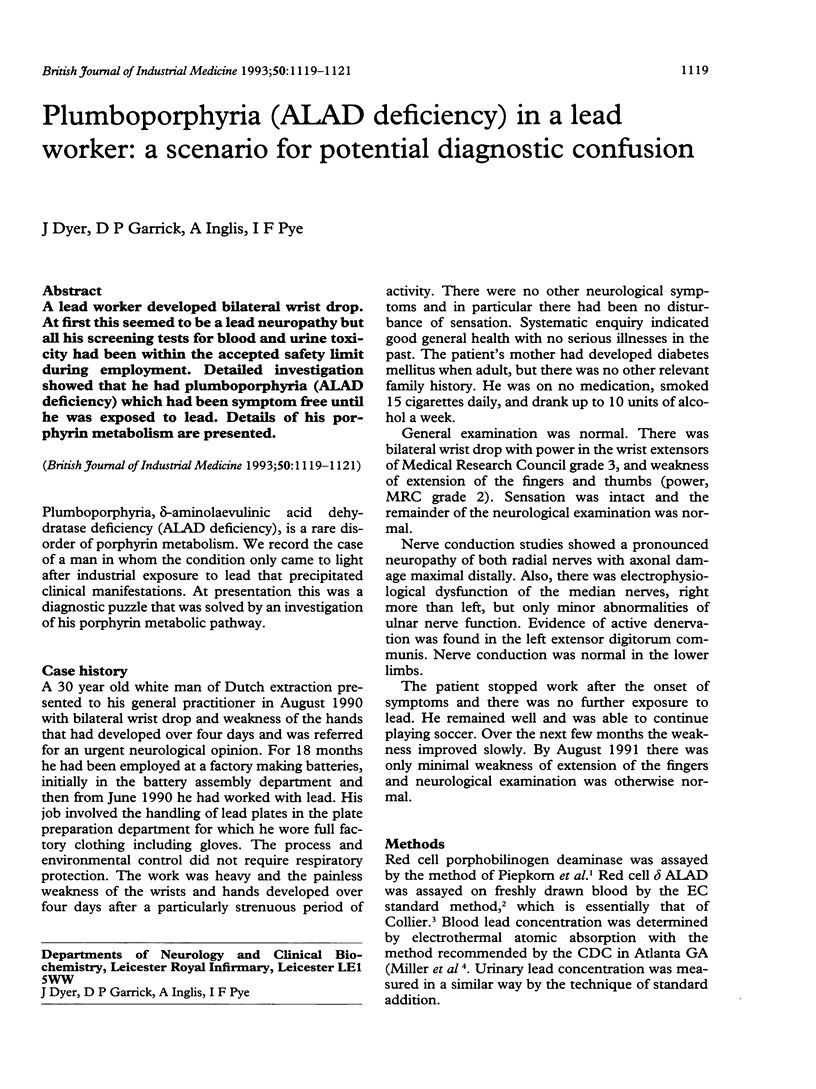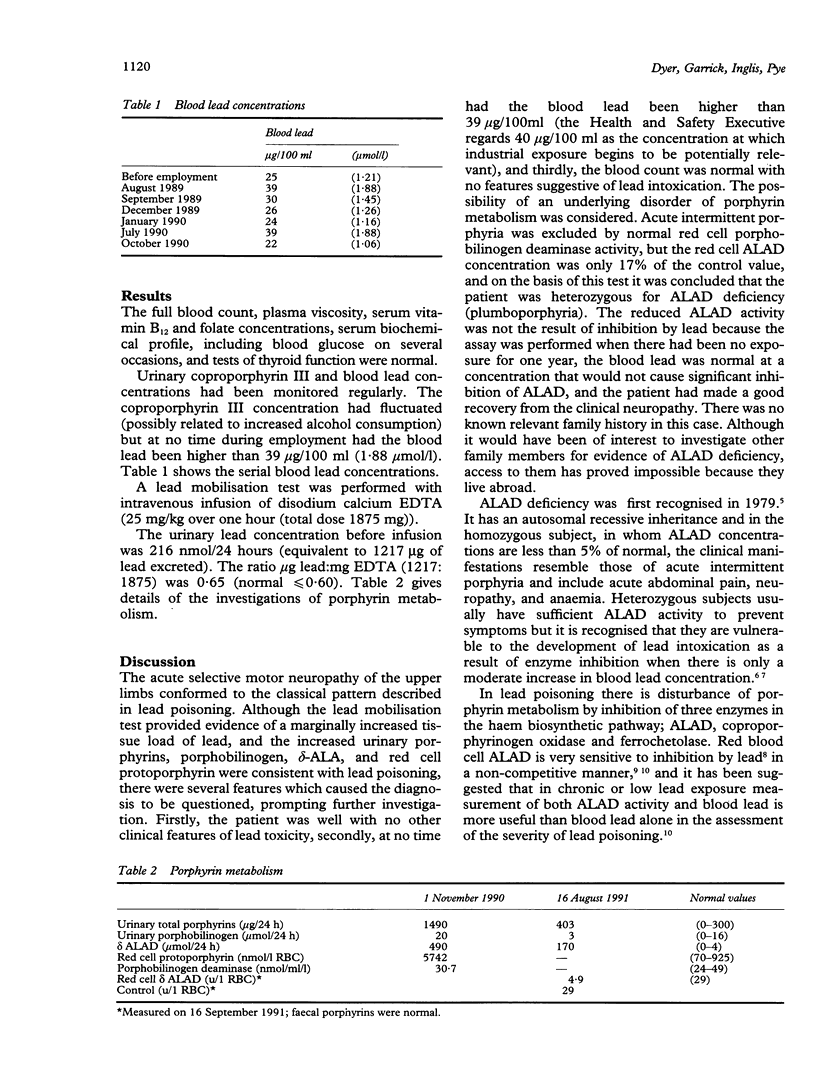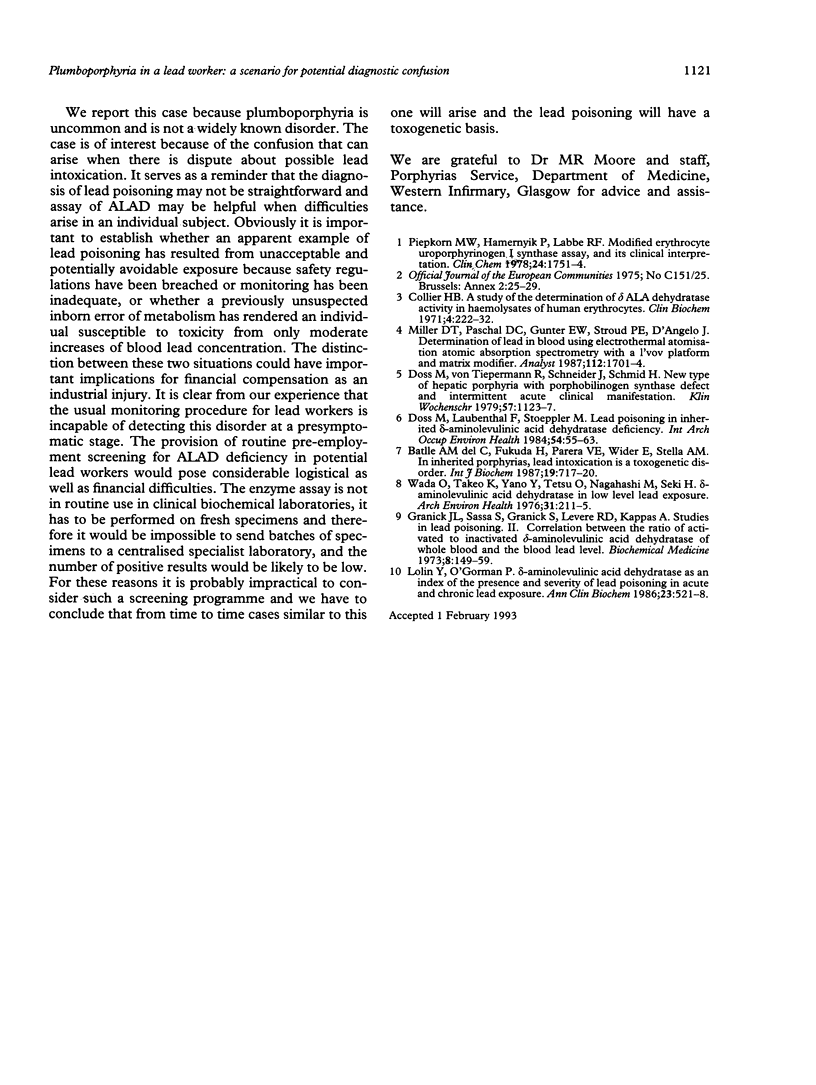Abstract
A lead worker developed bilateral wrist drop. At first this seemed to be a lead neuropathy but all his screening tests for blood and urine toxicity had been within the accepted safety limit during employment. Detailed investigation showed that he had plumboporphyria (ALAD deficiency) which had been symptom free until he was exposed to lead. Details of his porphyrin metabolism are presented.
Full text
PDF


Selected References
These references are in PubMed. This may not be the complete list of references from this article.
- Batlle A. M., Fukuda H., Parera V. E., Wider E., Stella A. M. In inherited porphyrias, lead intoxication is a toxogenetic disorder. Int J Biochem. 1987;19(8):717–720. doi: 10.1016/0020-711x(87)90086-3. [DOI] [PubMed] [Google Scholar]
- Doss M., Laubenthal F., Stoeppler M. Lead poisoning in inherited delta-aminolevulinic acid dehydratase deficiency. Int Arch Occup Environ Health. 1984;54(1):55–63. doi: 10.1007/BF00378728. [DOI] [PubMed] [Google Scholar]
- Doss M., von Tiepermann R., Schneider J., Schmid H. New type of hepatic porphyria with porphobilinogen synthase defect and intermittent acute clinical manifestation. Klin Wochenschr. 1979 Oct 15;57(20):1123–1127. doi: 10.1007/BF01481493. [DOI] [PubMed] [Google Scholar]
- Granick J. L., Sassa S., Granick S., Levere R. D., Kappas A. Studies in lead poisoning. II. Correlation between the ratio of activated to inactivated delta-aminolevulinic acid dehydratase of whole blood and the blood lead level. Biochem Med. 1973 Aug;8(1):149–159. doi: 10.1016/0006-2944(73)90018-5. [DOI] [PubMed] [Google Scholar]
- Lolin Y., O'Gorman P. delta-Aminolaevulinic acid dehydratase as an index of the presence and severity of lead poisoning in acute and chronic lead exposure. Ann Clin Biochem. 1986 Sep;23(Pt 5):521–528. doi: 10.1177/000456328602300506. [DOI] [PubMed] [Google Scholar]
- Miller D. T., Paschal D. C., Gunter E. W., Stroud P. E., D'Angelo J. Determination of lead in blood using electrothermal atomisation atomic absorption spectrometry with a L'vov platform and matrix modifier. Analyst. 1987 Dec;112(12):1701–1704. doi: 10.1039/an9871201701. [DOI] [PubMed] [Google Scholar]
- Piepkorn M. W., Hamernyik P., Labbé R. F. Modified erythrocyte uroporphyrinogen I synthase assay, and its clinical interpretation. Clin Chem. 1978 Oct;24(10):1751–1754. [PubMed] [Google Scholar]
- Wada O., Takeo K., Yano Y., Ono T., Nagahashi M. delta-aminolevulinic acid dehydratase in low level lead exposure. Arch Environ Health. 1976 Jul-Aug;31(4):211–215. doi: 10.1080/00039896.1976.10667221. [DOI] [PubMed] [Google Scholar]


